In my current trip to Japan, instead of visiting the usual tourist sights and natural paranoma of Japan, I decided to delve into something deeper. Having studied management theories and business cases from a western MBA perspective, I am thinking of exploring a different set of business philosophical system. In the east, Japan is well-known for its multi-national businesses which has survived through the two world wars and many global crisis. There is the 'God of Management (?????)', which is very well-known in Japan. He is Matsushita Konosuke, who founded the large consumer electronics company of Panasonic.
There is a museum dedicated to Matsushita and it is located at the outskirts of Osaka, at a town named Kadoma. The nearest electric train station is Nishisanso (???). From the station, past the station gates, turned right towards the right station exit and there are direction signs pointing to the museum from there. It is a short 3mins walk to the museum.
The Japanese / English words of the museum greeted the visitor as they arrive.
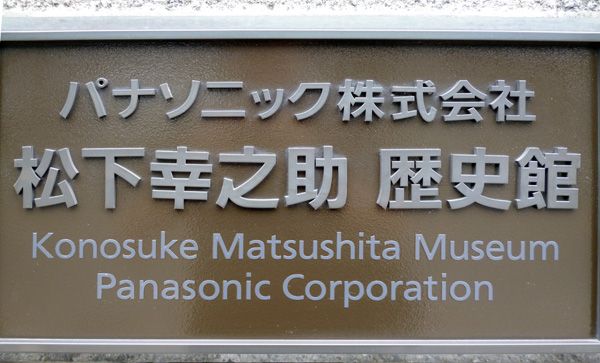
Beyond the gates is actually a statue of Konosuke Matsushita. He seems to be walking forward and reaching out to you.
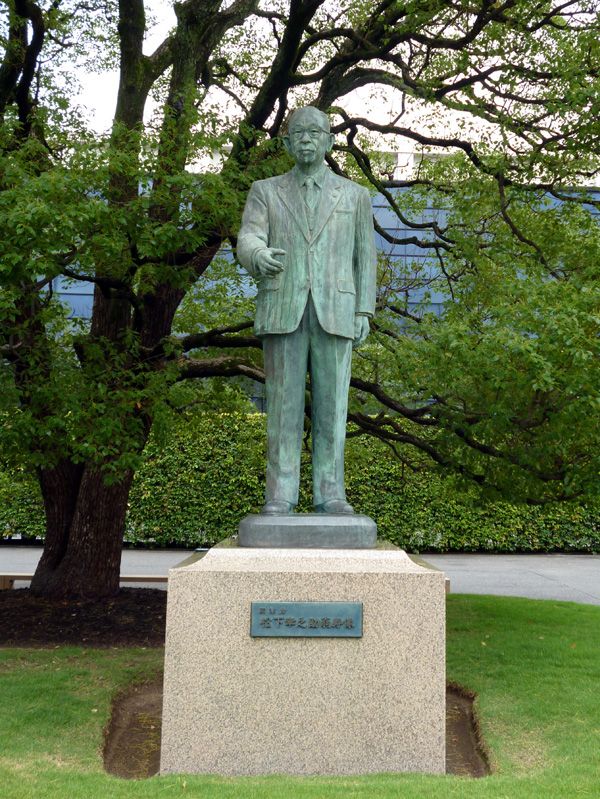
And here we have the Matsushita museum building. Behind is the iconic Panasonic brand. The offices and factories of Panasonic are still running to this day.
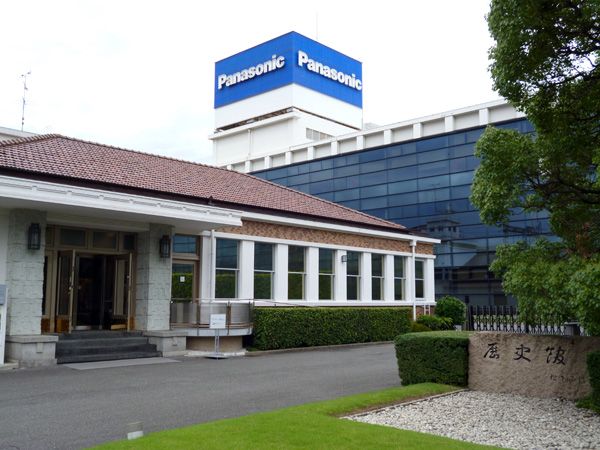
Going through the door, I am requested to fill in a visitor book. There are 2 books, one for Panasonic staffs and another for normal visitors. There is a Chinese word written beneath the museum name and it is "?? (sunao)". We will see this word repeating itself through the museum and we will start to appreciate the importance of it. Sunao is a state of mind that we should have when we conduct our management duties. It is a mind that is indiscriminated, free from stereotypes, open and highly versatile. Personally, I find this to be quite similar to the state of mind expounded by Zen.
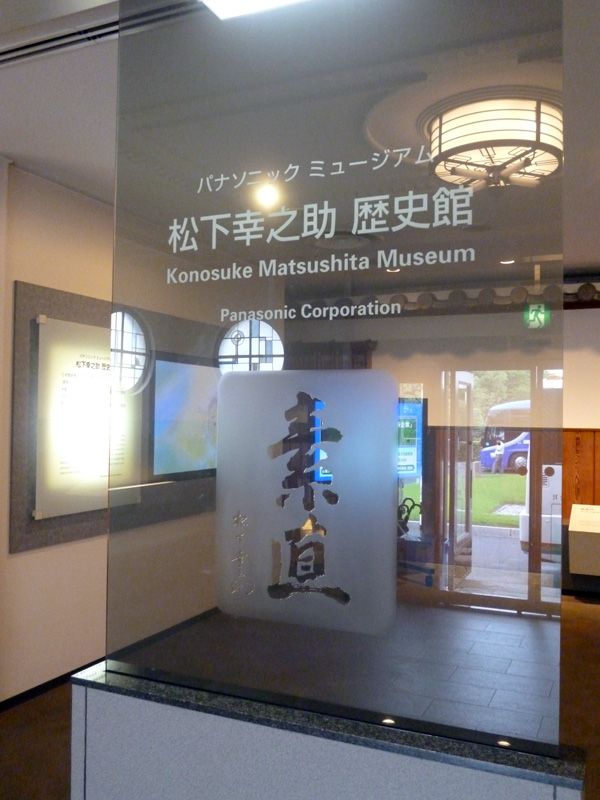
There are actually different segments to the exhibits. At the entrance we have an overview of the founder and the company current mission towards the 100-year anniversary in 2018.
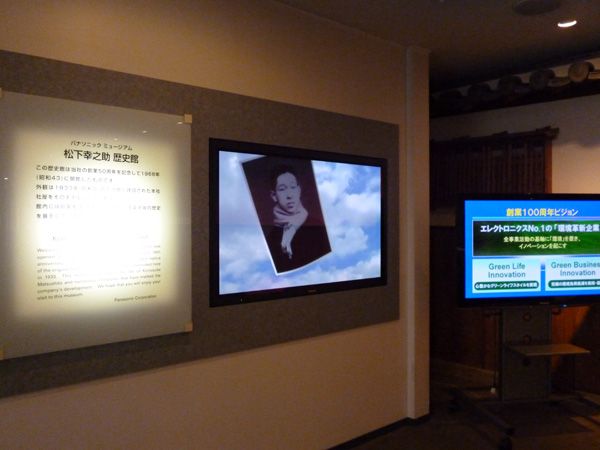
The word 'Path' (?) shows the different milestones of Konosuke Matsushita's life. It is split into 4 different phases as can be seen from the picture below.
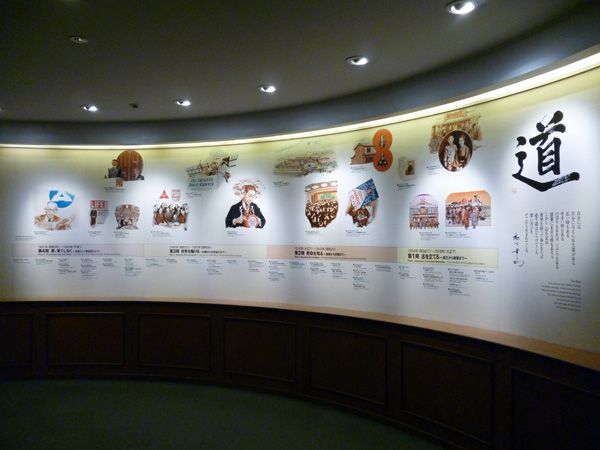
We can understand more on the early childhood period of Konosuke Matsushita. The founder's life was tough when he was young. Due to difficult financial situation, at an early age of 10, he was sent away from his mother to Osaka to start his apprenticeship.
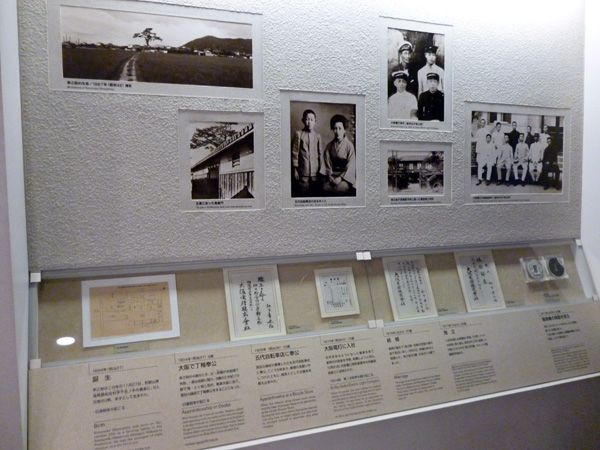
In 1918, Matsushita (age 24) started out his company manufacturing electric sockets with a rented house as seen below

There is an extensive photo library with many of the documents put up on display. I find the most notable moments are how the founder overcome the great economic depression of 1930 and not laid off workers, and being labelled as part of the Zaibatsu by the Allies occupiers after World War II, Matsushita Electric is the only company where the workers petition for the founder to stay behind instead of the other way round.

As a Japanese company, they have company songs. So below, we can listen to the company songs, starting from back in the 30s to the most recent period. They still sing it on a daily basis at its more than four hundreds sites worldwide.
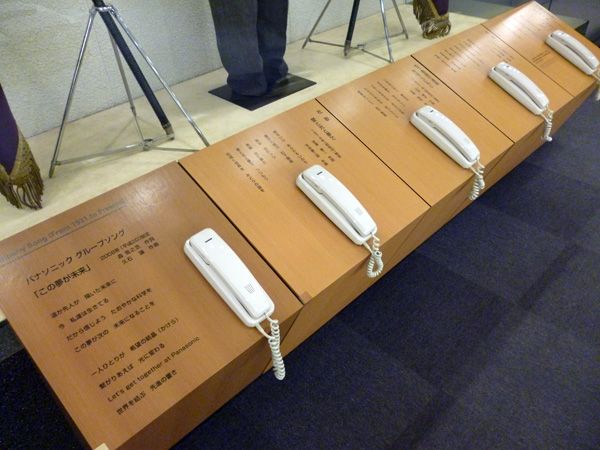
The mission creed of the company was established in 1932. This was an important period in the company history. It started when the founder visited a temple which was under construction. In there he saw the people working passionately, enthusiastically and happily for this community project. The founder started to reflect and also found that the company, as a public entity, should be accountable to the public and have a public mission. Thus, he set a 250 years goal towards the elimination of poverty. We have the company mission in Japanese below.

We proceed to the next section which show the products on display. Before Panasonic, there are many brands under Matsushita. Notably of which is 'National'. There are also many other brands which every household will have and they are 'Lumix', 'Viera', 'Technics', 'KDK', 'Sanyo', 'JVC' and so on.
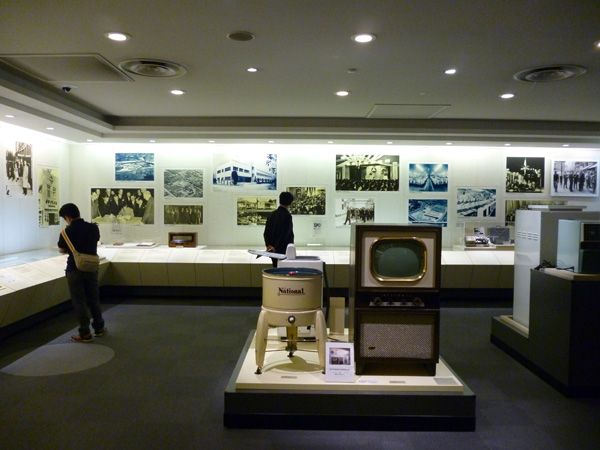
The museum can be completed in 30mins if the visitor briefly browse through the posters and products. But the real essence of the museum lies not what was on display, but the key teachings of the founder. In there are 3 video booths which contain more than 2 hours of the founder's speeches. They are 'Talking about Life', 'Human Development' and on 'Management'. It is quite amazing that the approach towards human resource development and talent cultivation was established at such an early period, even before the US MBA took off. The teachings by Konosuke Matsushita is timeless indeed.
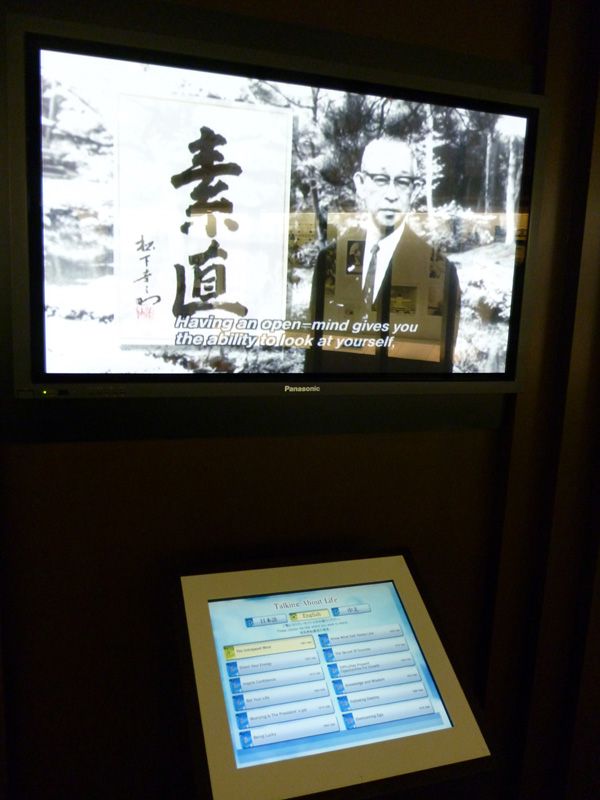
Here we have another gallery which showcase products after World War II.
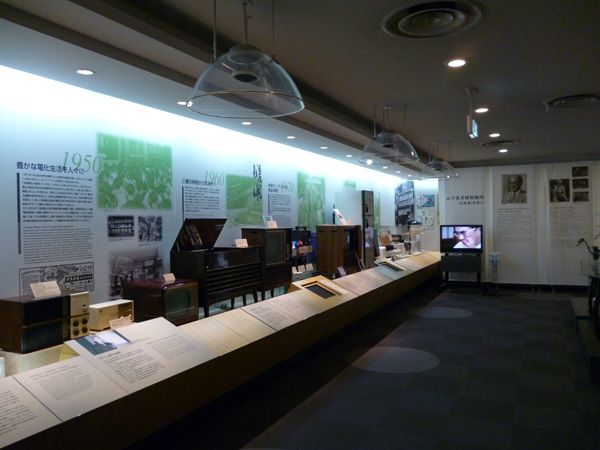
The many different books written by Konosuke Matsushita. These books can be ordered from the PHP website. I tried ordering them and it was successful.
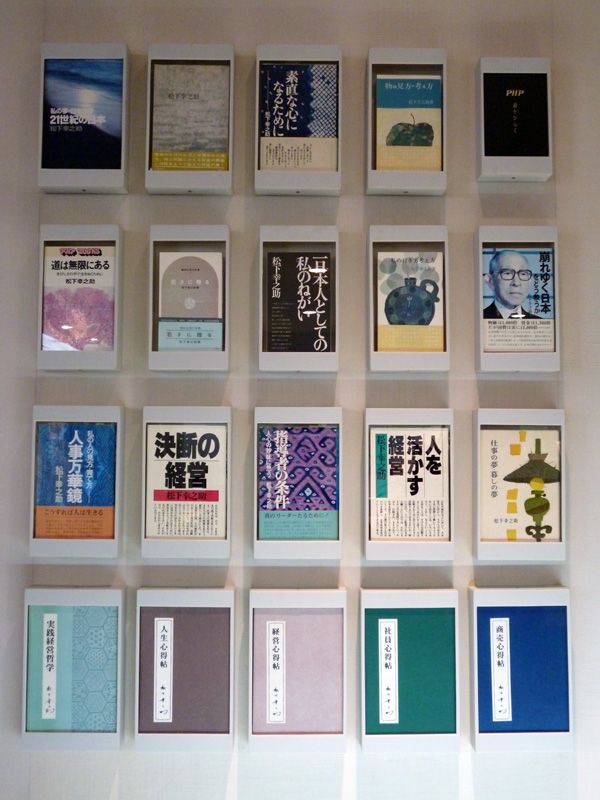
There is also a video library as shown below.
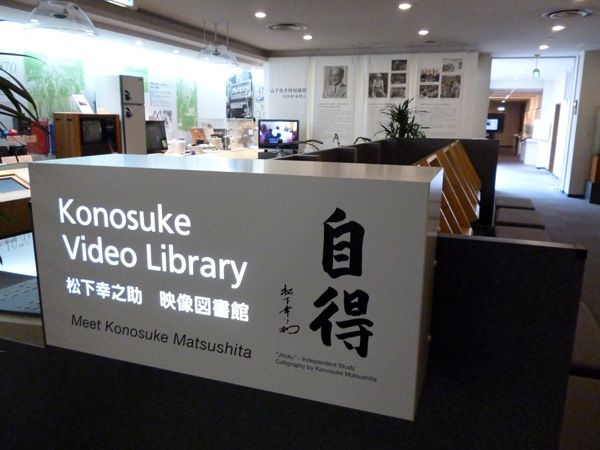
The core management principle in Matsushita are 'Autonomous Management' and 'Employee Entrepreneurship'. It gives a very refreshing perspective in empowering employees and to have a passion-driven life, like an entrepreneur.
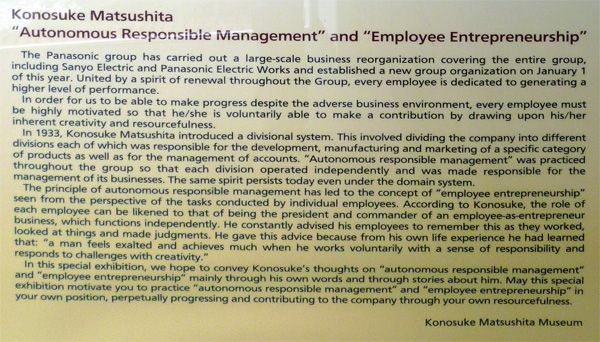
There is also a time capsule as seen below.
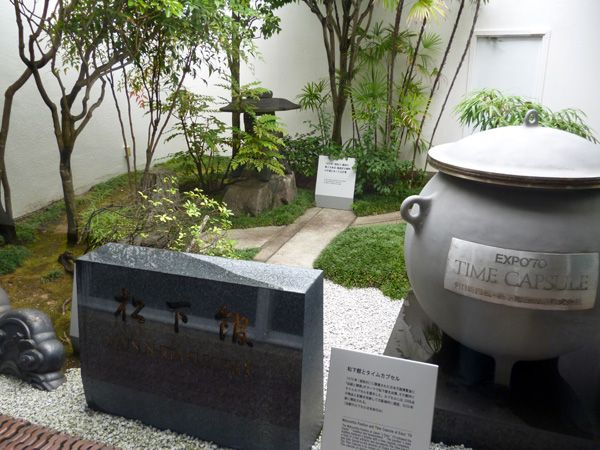
The first major factory setup by Matsushita is in Kadoma city. It is still an operating company where the headquarters of Panasonic is. Compare the size of the train station with the compound and you will understand how large is this area. It need to be split into north, south and west section.
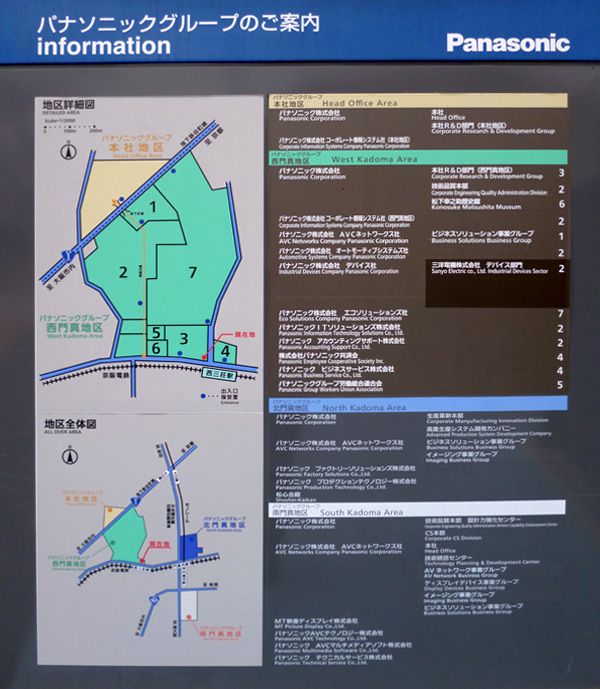
There is a museum dedicated to Matsushita and it is located at the outskirts of Osaka, at a town named Kadoma. The nearest electric train station is Nishisanso (???). From the station, past the station gates, turned right towards the right station exit and there are direction signs pointing to the museum from there. It is a short 3mins walk to the museum.
The Japanese / English words of the museum greeted the visitor as they arrive.

Beyond the gates is actually a statue of Konosuke Matsushita. He seems to be walking forward and reaching out to you.

And here we have the Matsushita museum building. Behind is the iconic Panasonic brand. The offices and factories of Panasonic are still running to this day.

Going through the door, I am requested to fill in a visitor book. There are 2 books, one for Panasonic staffs and another for normal visitors. There is a Chinese word written beneath the museum name and it is "?? (sunao)". We will see this word repeating itself through the museum and we will start to appreciate the importance of it. Sunao is a state of mind that we should have when we conduct our management duties. It is a mind that is indiscriminated, free from stereotypes, open and highly versatile. Personally, I find this to be quite similar to the state of mind expounded by Zen.

There are actually different segments to the exhibits. At the entrance we have an overview of the founder and the company current mission towards the 100-year anniversary in 2018.

The word 'Path' (?) shows the different milestones of Konosuke Matsushita's life. It is split into 4 different phases as can be seen from the picture below.

We can understand more on the early childhood period of Konosuke Matsushita. The founder's life was tough when he was young. Due to difficult financial situation, at an early age of 10, he was sent away from his mother to Osaka to start his apprenticeship.

In 1918, Matsushita (age 24) started out his company manufacturing electric sockets with a rented house as seen below

There is an extensive photo library with many of the documents put up on display. I find the most notable moments are how the founder overcome the great economic depression of 1930 and not laid off workers, and being labelled as part of the Zaibatsu by the Allies occupiers after World War II, Matsushita Electric is the only company where the workers petition for the founder to stay behind instead of the other way round.

As a Japanese company, they have company songs. So below, we can listen to the company songs, starting from back in the 30s to the most recent period. They still sing it on a daily basis at its more than four hundreds sites worldwide.

The mission creed of the company was established in 1932. This was an important period in the company history. It started when the founder visited a temple which was under construction. In there he saw the people working passionately, enthusiastically and happily for this community project. The founder started to reflect and also found that the company, as a public entity, should be accountable to the public and have a public mission. Thus, he set a 250 years goal towards the elimination of poverty. We have the company mission in Japanese below.

We proceed to the next section which show the products on display. Before Panasonic, there are many brands under Matsushita. Notably of which is 'National'. There are also many other brands which every household will have and they are 'Lumix', 'Viera', 'Technics', 'KDK', 'Sanyo', 'JVC' and so on.

The museum can be completed in 30mins if the visitor briefly browse through the posters and products. But the real essence of the museum lies not what was on display, but the key teachings of the founder. In there are 3 video booths which contain more than 2 hours of the founder's speeches. They are 'Talking about Life', 'Human Development' and on 'Management'. It is quite amazing that the approach towards human resource development and talent cultivation was established at such an early period, even before the US MBA took off. The teachings by Konosuke Matsushita is timeless indeed.

Here we have another gallery which showcase products after World War II.

The many different books written by Konosuke Matsushita. These books can be ordered from the PHP website. I tried ordering them and it was successful.

There is also a video library as shown below.

The core management principle in Matsushita are 'Autonomous Management' and 'Employee Entrepreneurship'. It gives a very refreshing perspective in empowering employees and to have a passion-driven life, like an entrepreneur.

There is also a time capsule as seen below.

The first major factory setup by Matsushita is in Kadoma city. It is still an operating company where the headquarters of Panasonic is. Compare the size of the train station with the compound and you will understand how large is this area. It need to be split into north, south and west section.
